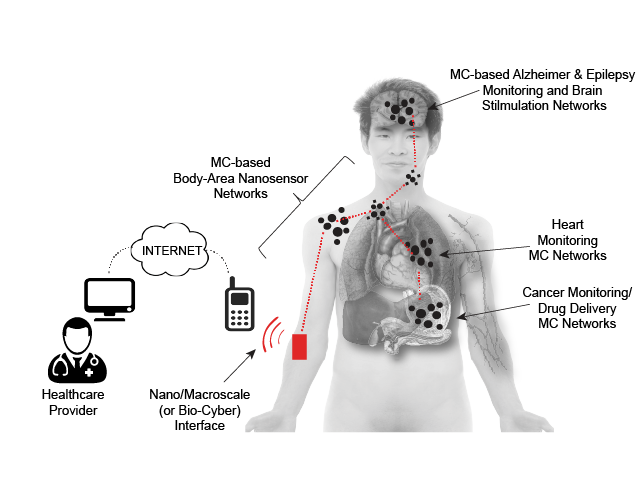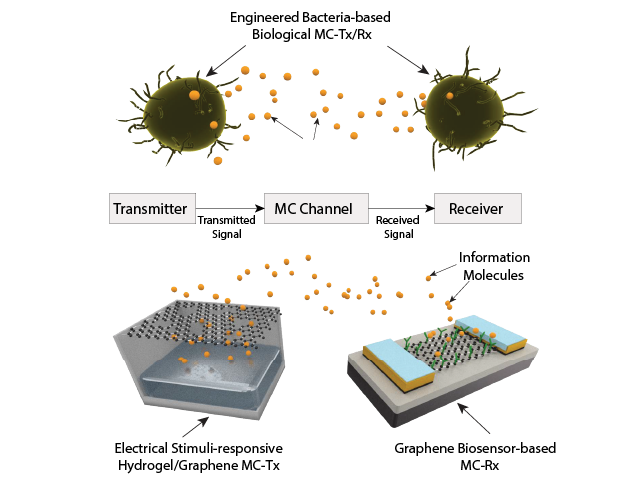MI-FI: Micro/Nanoscale Transceivers for Wireless Molecular Information Communications
|| Funded by: AXA Research Fund || Period: 2020-2025 || Amount: 1M Euro |
 |
Nanotechnology is enabling us to devise ever-smaller devices to interact with the
universe at molecular resolution. Though small enough to penetrate into cells, these
devices individually are of limited capability. To unleash the full potential of
nanotechnology, communication among nanomachines is a must. This would
enable more complex applications, e.g., continuous health monitoring with
intrabody nanosensor networks. Internet of Nano Things (IoNT), which defines these
networks of nanomachines, such as nanobiosensors and engineered bacteria,
integrated with the Internet infrastructure, has seen tremendous interest recently.
IoNT is set to transform the way we connect with and understand the world at the
bottom. However, conventional electromagnetic (EM) communication techniques,
proved impractical for nanoscale due to antenna size and power limitations and
large propagation losses. On the other hand, Nature itself provides a robust way of
nanocommunication, i.e., Molecular Communications (MC), which is the common
communication modality among living cells ranging from our own neurons to
bacteria. Using the same language with living cells by encoding, transmitting and
receiving information using molecules provides an energy efficient and reliable
nanocommunication, even at harsh biological environments, where we expect most
impactful medical applications of IoNT would operate.

Although there is tremendous interest in this field accompanied by a large body of
theoretical work to devise communication methods for MC, no working prototype of
an artificial MC has come to date. On the other hand, MC brings about unique
challenges resulting from its highly complex, nonlinear, time-varying channel
properties due to the discrete nature of information carriers, substantial channel
memory and peculiarities of molecular interactions at nanoscale, that cannot be
always tackled by conventional ICT tools. This leaves a huge question mark over the
reliability of the existing MC methods, which are mostly adopted from conventional
EM communications and not validated with practical MC devices.

Therefore, there is an urgent need for practical MC devices at micro/nanoscale, to
close this gap between theory and practice in order to unleash the envisioned
applications of IoNT and MC. Hence, in this project, we set out to implement the first
working prototype of a micro/nanoscale MC system.